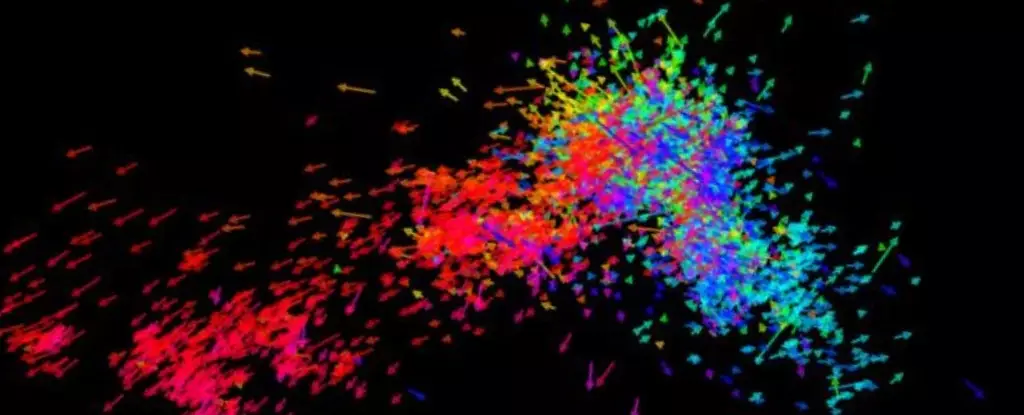Deep within the celestial realm, two ethereal companions dance around our Milky Way— the Large Magellanic Cloud (LMC) and its smaller counterpart, the Small Magellanic Cloud (SMC). These irregular dwarf galaxies, named after the pioneering explorer Ferdinand Magellan who first documented them in the 1500s, have long served as a playground for astronomers and astrophysicists alike. Located approximately 160,000 and 200,000 light-years from Earth, respectively, the Magellanic Clouds are intriguing for their rich reservoirs of gas and young stellar populations. Historically perceived as mere companions to our Milky Way, recent investigations suggest that their destinies may be more tumultuous than previously believed.
Unraveling the Cosmic Drama
A groundbreaking study led by researchers Satoya Nakano and Kengo Tachihara from Nagoya University has provided fascinating insights into this gravitational interplay. Their meticulous analysis of a staggering 7,000 massive stars residing in the SMC has yielded unexpected patterns in stellar movement that hint at a cosmic disruption of epic proportions. Unlike the harmonious rotation found in galaxies like the Milky Way, where stars and gas rotate in unison, the SMC’s massive stars exhibit chaotic movement. Some are drawn toward the LMC, while others escape its gravitational influence, suggesting that the SMC is indeed being pulled apart by its larger neighbor. Such findings challenge conventional views of galactic behavior, revealing a complex narrative of instability and destruction.
The Gravitational Tug-of-War
At the heart of this cosmic drama lies the intricate dance of gravitational forces. The gravitational embrace between the SMC and LMC is not a gentle sway but rather a relentless tug-of-war that has significant implications. The material being flung from the SMC forms the trailing Magellanic Stream—a magnificent arc extended across the Southern Hemisphere sky. This stream serves as a testament to the ongoing disruption, a visual reminder of the forces at play in our universe. What’s more compelling is the realization that this process may eventually lead to the SMC’s ultimate disintegration, diminishing its presence in the cosmos.
A Paradigm Shift in Galactic Dynamics
Another significant finding from Nakano and Tachihara’s study is the startling absence of rotational dynamics among the SMC’s stars. Typically, young massive stars are expected to move in concert with their gaseous nurseries, displaying coherent rotational patterns before they finally decouple. However, the SMC’s stellar population defies this expectation, hinting at a complex interaction between gas and stars that challenges our understanding of galaxy formation. The gas itself appears not to be rotating, an anomaly that necessitates a reevaluation of the SMC’s mass and its gravitational interactions with the LMC and the Milky Way. These new insights could reshape the narrative of how galaxies engage with one another in different epochs of the universe.
The SMC’s Role as a Cosmic Harbinger
The SMC is increasingly being recognized as a crucial key to unveiling the universe’s secrets, especially concerning the formation of galaxies in their primordial phases. Its chaotic nature offers a window into the complexities of galactic evolution. By delving deep into the movement of stars within both the SMC and LMC, researchers can forge connections between star formation and the intricate dynamics of galaxies. The insights drawn from this observational research not only enhance our understanding of these celestial neighbors but also propel our comprehension of the broader universe.
As we stand on the brink of a new era in astronomical discovery, the tale of the Small Magellanic Cloud serves as a compelling reminder of the constant change that defines the cosmos. This galaxy is not simply a distant object of study but a vivid participant in the grand dance of gravitational forces that shape our universe. The findings from Nagoya University are not merely academic; they hold implications that could redefine our understanding of cosmic histories, interactions, and the evolution of galaxies in ways we have yet to fully grasp.

